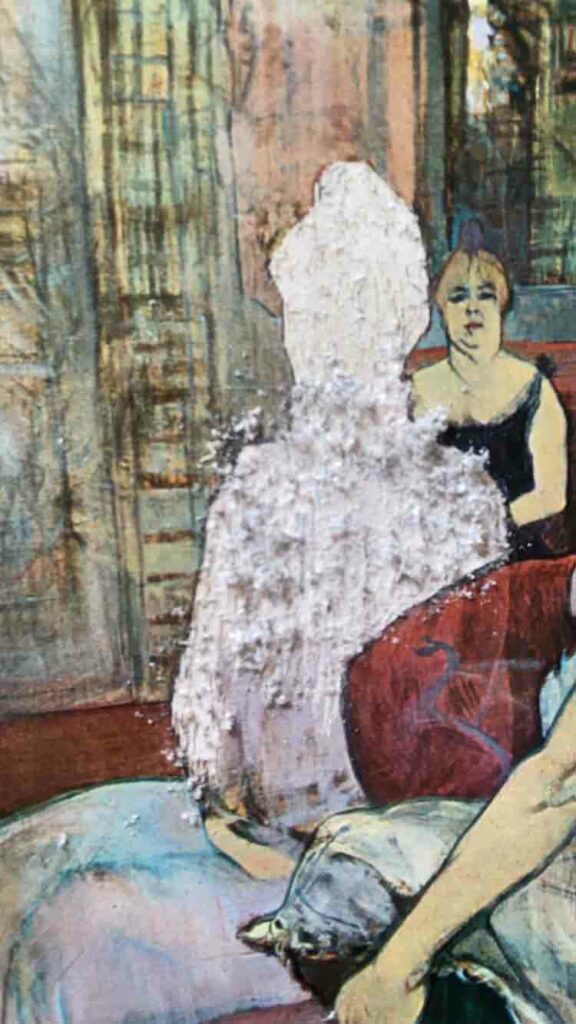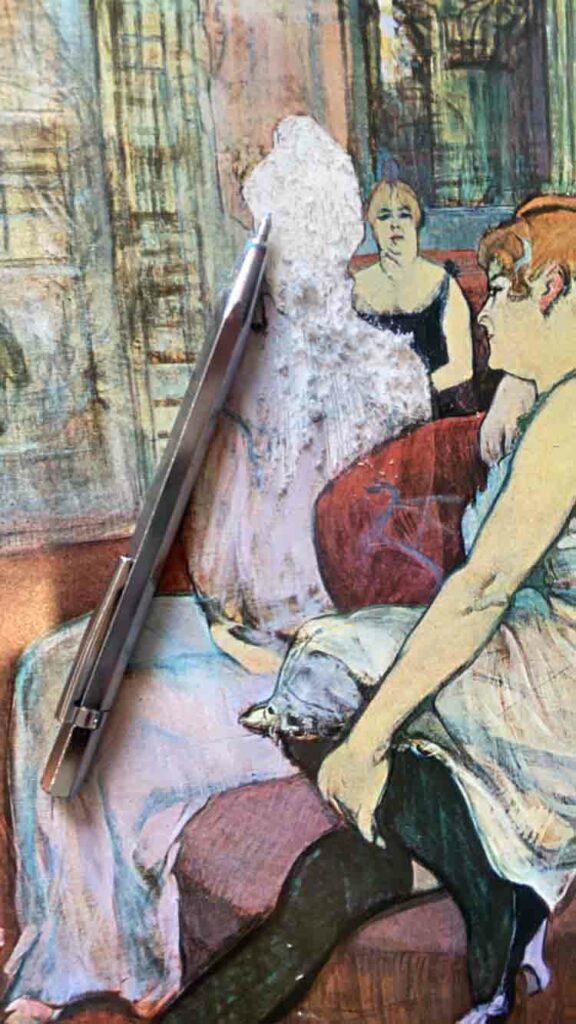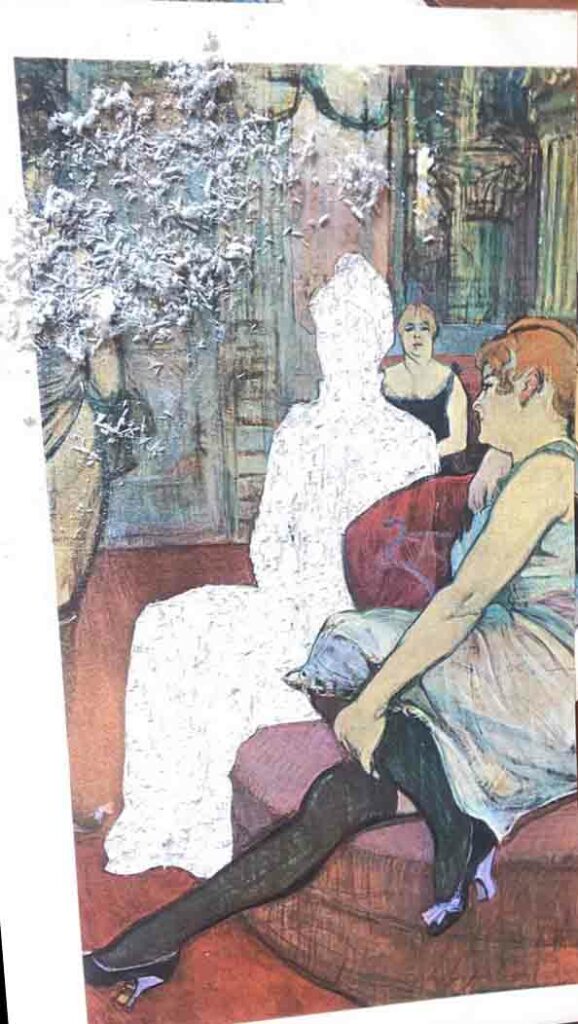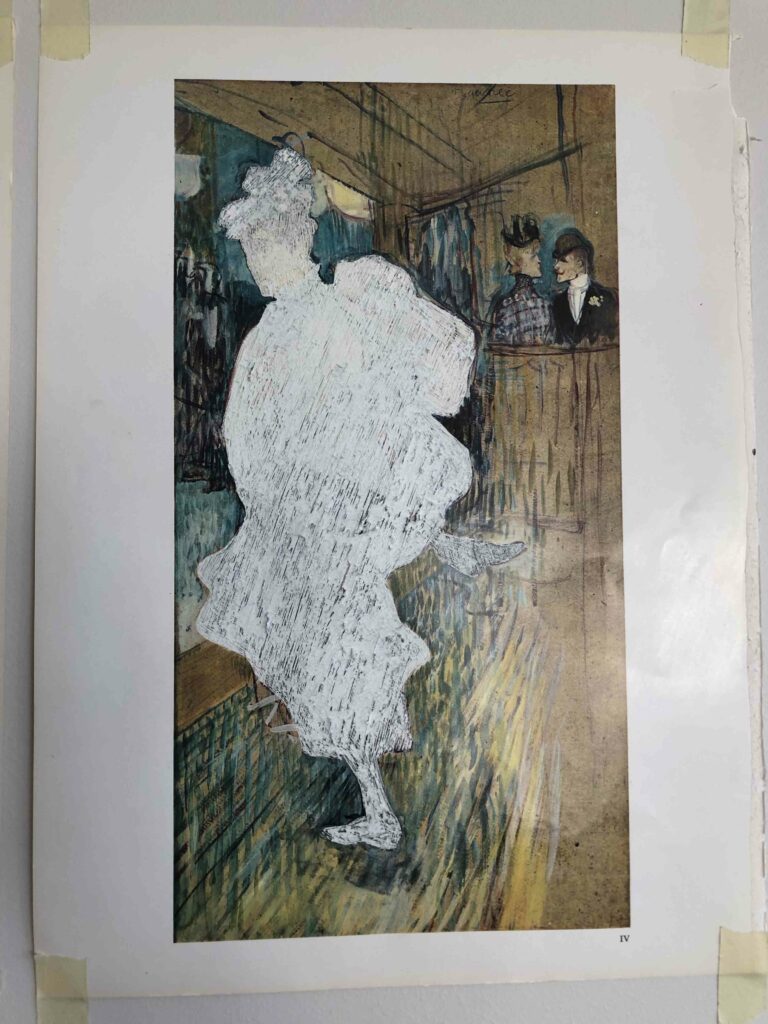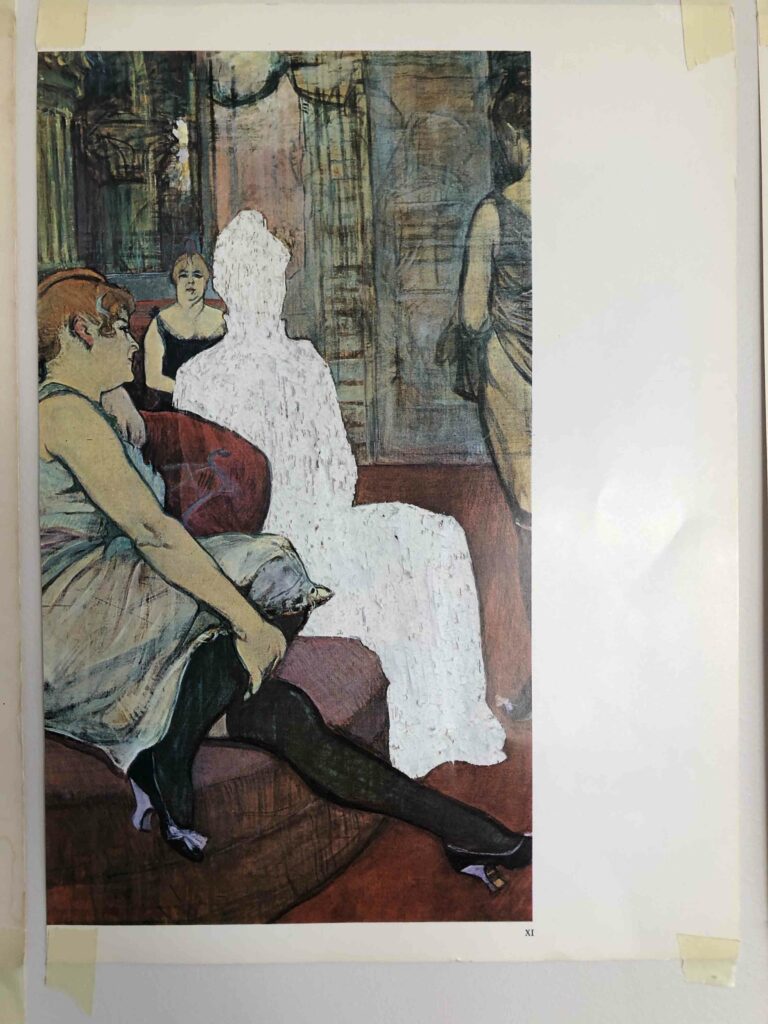Lockdown
Robert Rauschenberg’s idea to completely remove an image was something that I am quite interested to try out myself. This idea of removal as the only artistic process used to make an artwork is very different from what I had originally been doing during this brief. My approach has always been adding to the work by scratching through wet mediums. I think that I would be able to attempt my own versions of ‘The Erasure of William de Kooning’, except in my own way. I am quite interested in adopting Rauschenberg’s preference in using another artist’s image to work from and so, I will also be doing this.
During my search for resources and materials I could use for this brief in lockdown, I managed to find an old paperback book about Henri de Toulouse-Lautrec. I had this book because I very much like his painting style and have also studied him before. Because my resources are limited, I decided to use this book with his paintings as my artworks to erase.
My first attempt at this was isolated from my scratching technique because I wanted to explore the ways that you could erase an artwork. For this exploration, I used three different tools to use for my removal. My first choice for a removal tool was an eraser – the same tool that Rauschenberg had used. I briefly attempted this on a comic book. I found that the erasure technique worked, but it was a very lengthy process and the rubber constantly had to be wiped of ink. My next attempt was using masking tape to remove the ink. Placing it on the comic book page, I found that if I hadn’t taken away some of the stick from the page then it ripped the paper, but upon making the tape less sticky, it was not very successful in removing the image. My final experimental attempt was made using sanding paper. For this process, I used one of the images from my book of Latous Lautrec because the comic book paper would not have been able to withstand the roughness of the sanding paper. I found that this process was a lot more successful in removing the images, I think a part of it is to do with the strength of the paper I had used. The sanding technique was a very long process because the paper kept catching in the sandpaper thus making it smooth instead of rough – which is what I needed. The sanding technique was by far my favorite because you can visually see the movement of the sandpaper when it was removing the image.
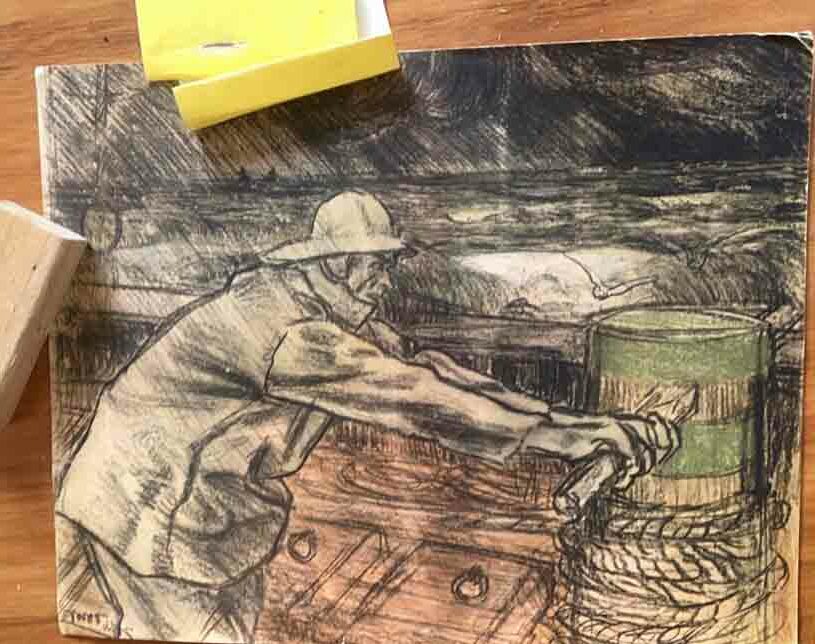
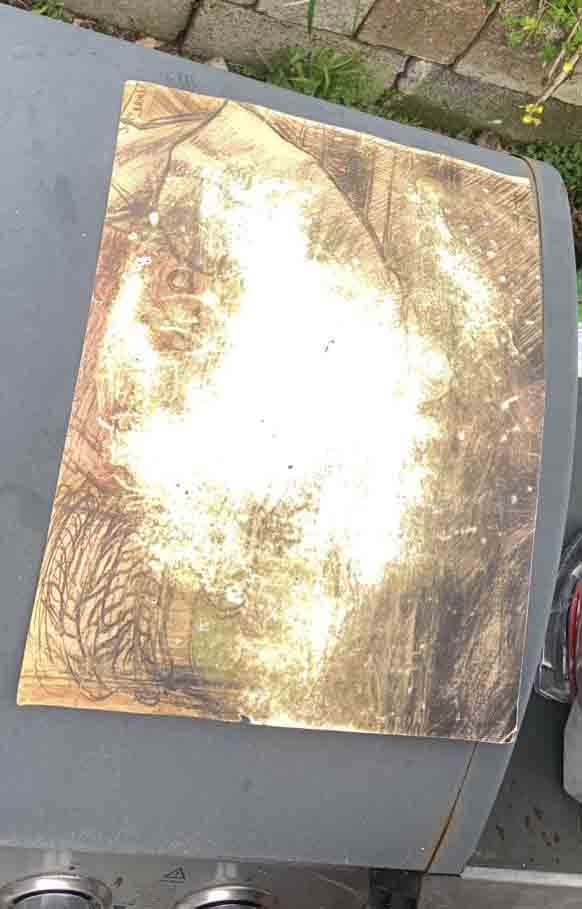
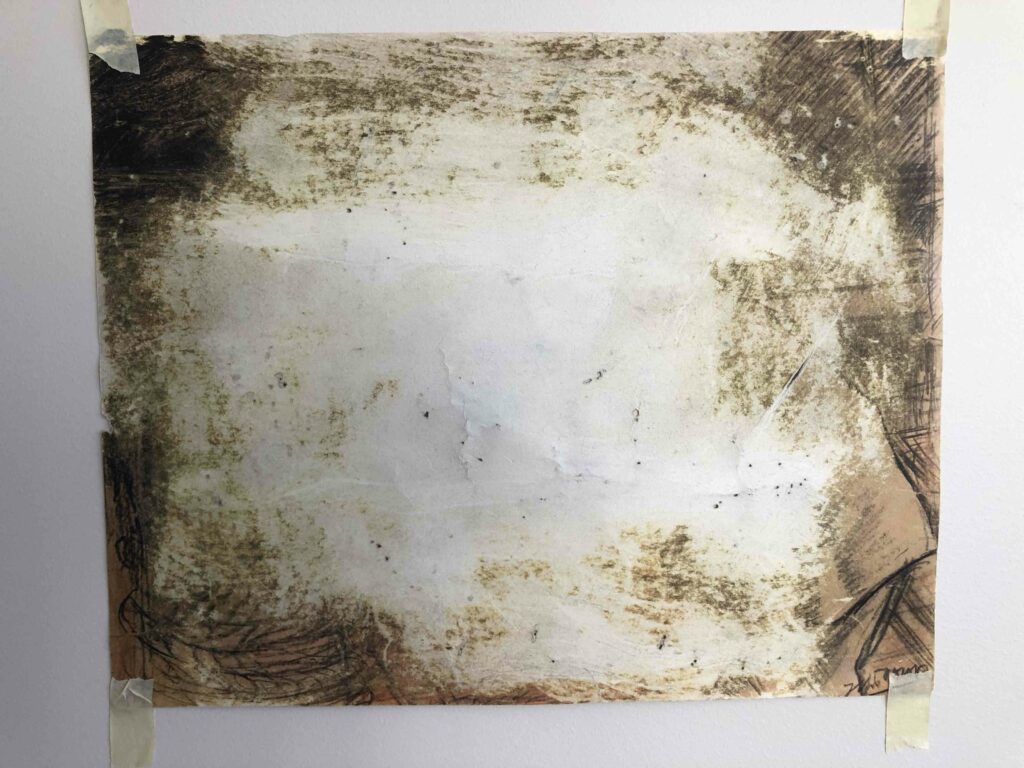
Once I had removed the entire image by sanding it back, I decided to return back to scratching and attempted to erase Toulouse-Lautrec’s images using my scratching tool. I found that when I removed the entire image through sanding, I was missing opportunities to manipulate the image itself. I was more interested in how you could affect the artwork by taking away seemingly important parts of the work. And so, for my first two following artworks, I scratched away the entire focal point of the image. The outcome of this process was very interesting because the concept of erasure is taking away something entirely. It is a process of removal. And so, in theory, by removing the focal point of the artwork I remove the relevance of the focal point. But I found that in these artworks, by removing the focal point by scratching it away, I made it much more dominating and noticeable. I find this concept really interesting and I am keen to explore the impact on Toulouse-Lautrec’s paintings when I take away different sections of the works.
